When you think of the color of corn, immediately yellow hues come to mind. Whilst this is mostly true corn flowers also have a variety that is white and bicolor. Some varieties of corn such as the ‘bloody butcher’ are even a red/black color. Furthermore, The ‘red aztec’ corn is an ancient variety and boasts a dark pink shade.
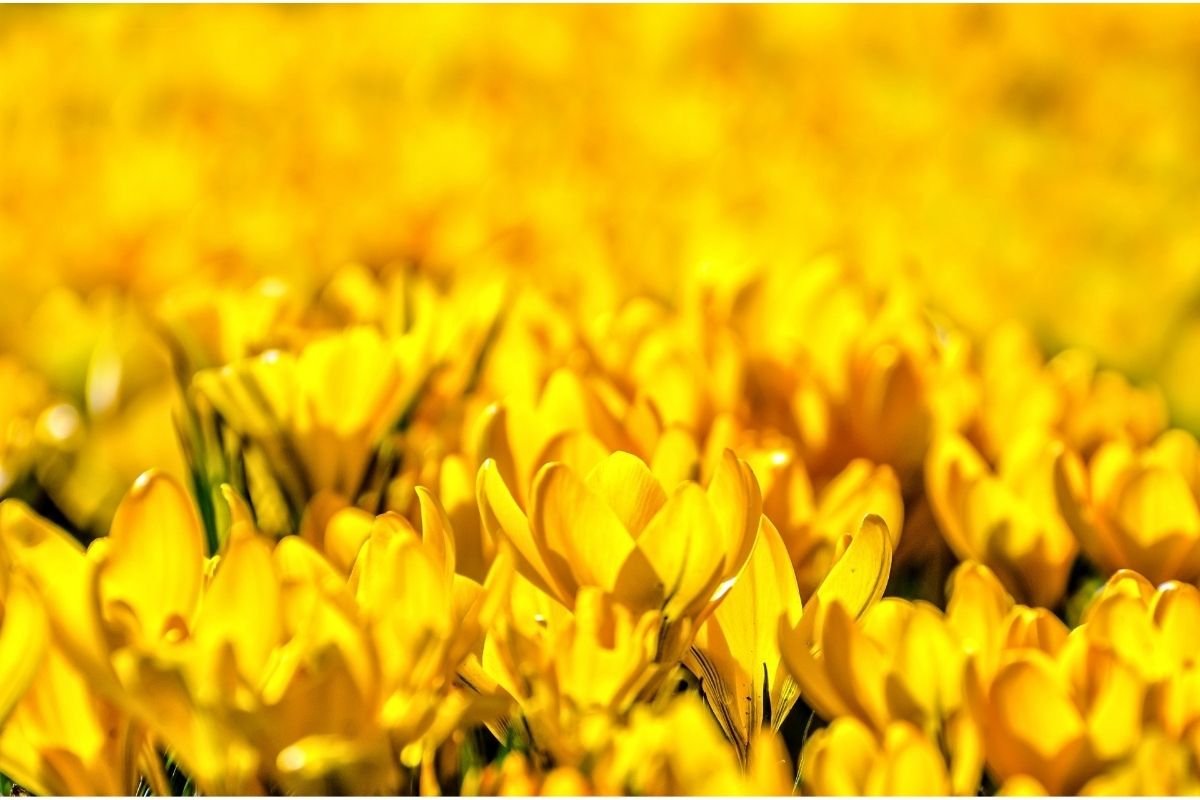
There are thousands of flower colors in the world that reflect the various colors of corn. Let’s find out some more information about flowers and what we can grow in our own gardens or identify when spending some time in nature.
Yellow Flowers
1. Daffodils
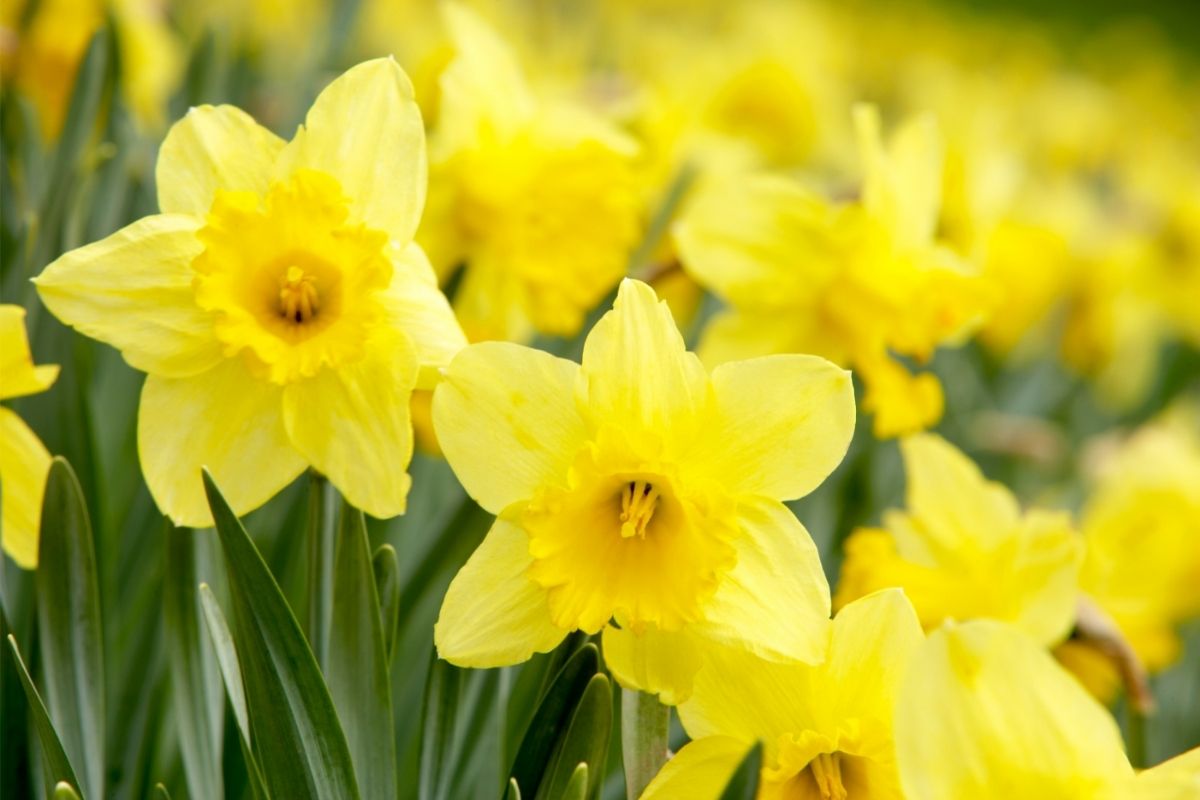
The popular corn flower color of the daffodil fills you with hope after a dark winter. Daffodils are the first sign of spring and start popping up everywhere as the weather warms up. They are hardy perennials and easy to grow. You should plant the bulbs in Autumn for a lovely display in early spring.
Daffodils can be yellow or white and consist of 6 petals shaped like a trumpet. Daffodils look gorgeous placed between shrubs in a border or grown inside for a cut flower. When planted in bulk, you’ll be blessed with the dramatic display it produces.
Daffodils like full or partial sun and will tolerate most soils, but most prefer neutral to acidic soil.
2. Yellow Hibiscus
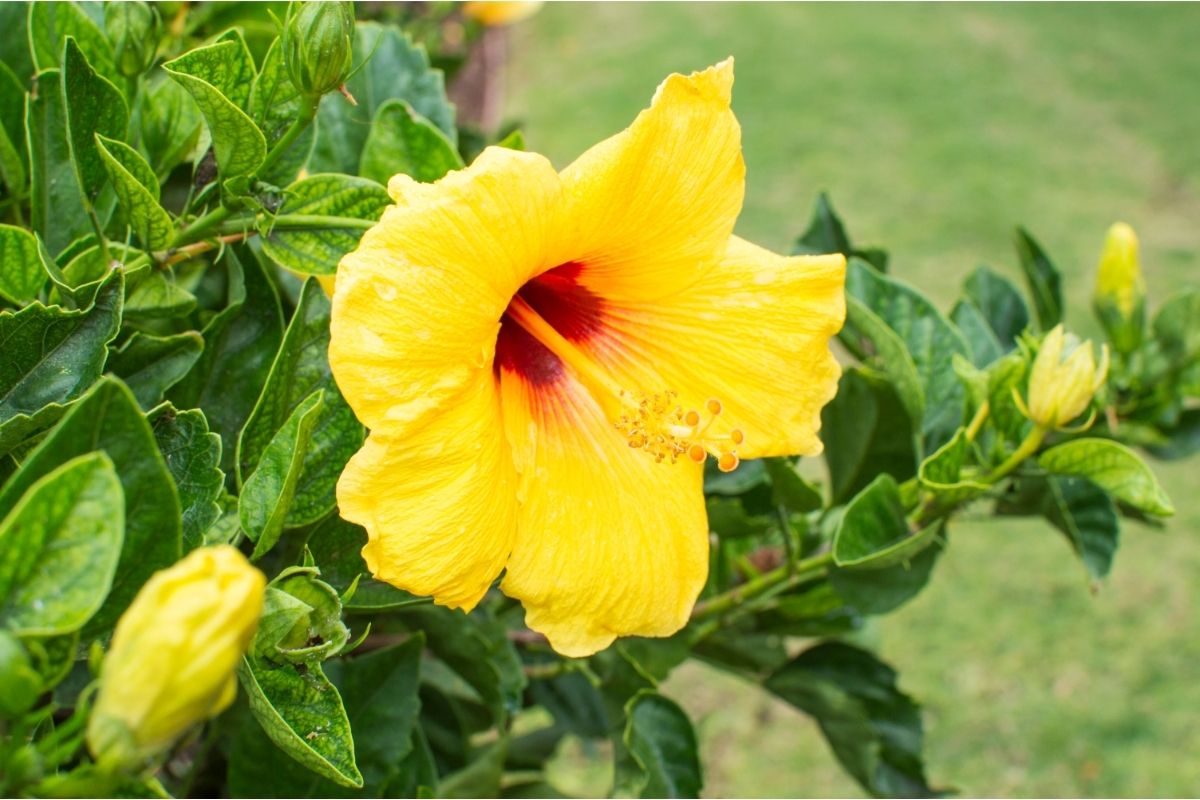
The yellow hibiscus is native to Hawaii and is a rare and endangered plant. It is a shrub and is generally found in dry areas. It grows from a small shrub to a larger tree, sometimes 15-30 feet tall.
The flowers are corn yellow and contain sharp prickles at the base. The flowers are impressive and grow as large as 4-6 inches across. The plant blooms in the spring and winter.
If you choose to grow yellow hibiscus, then choose a position that gets sun all day. A south-facing wall is ideal. It needs well-draining and moist soil and doesn’t need much water or fertilizer, It’s important to prune back each year.
3. Yellow Butterfly Bush
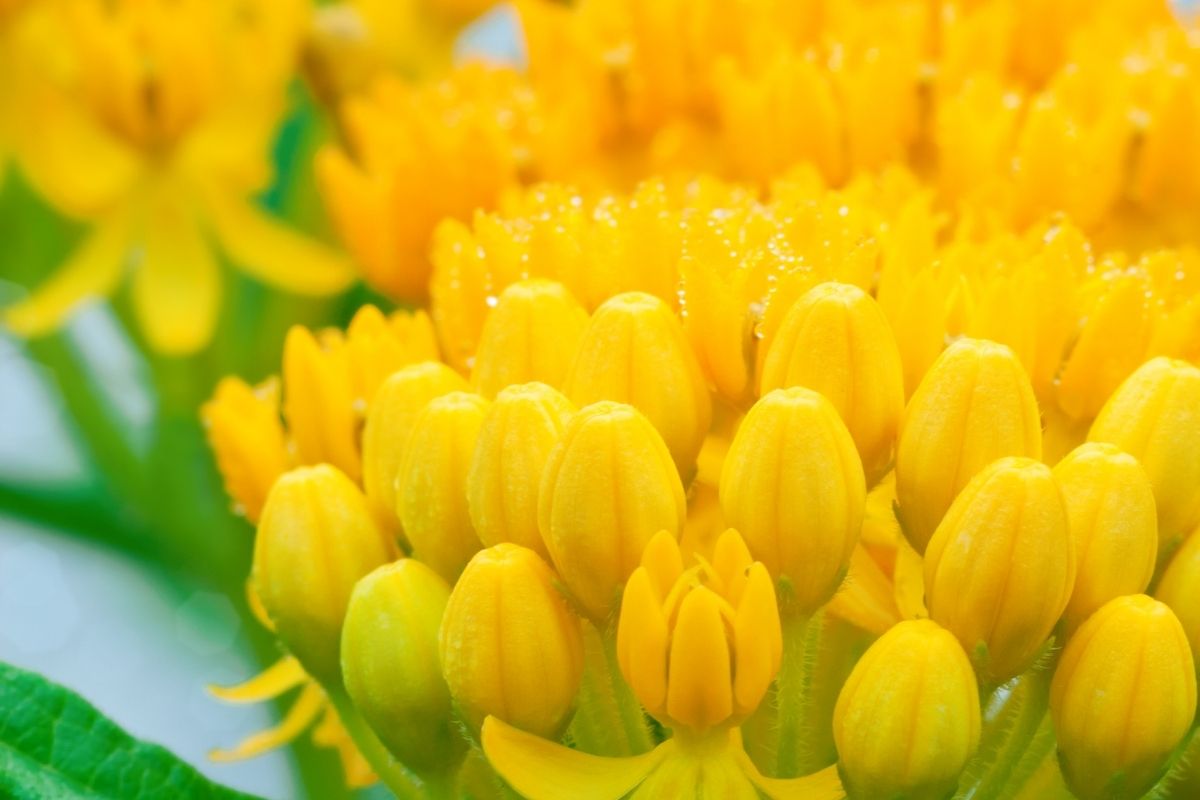
This pretty bush is also known as ‘honeycomb’ and is particularly useful if you want to attract butterflies and hummingbirds into your garden. It’s classed as a perennial shrub and is fast-growing. It produces creamy yellow flowers and gray/green leaves. Furthermore, it works well as a cut flower and compliments other flowers in a bouquet. Place this plant in full sun and in sandy or clay soil.
4. Yellow Marigold
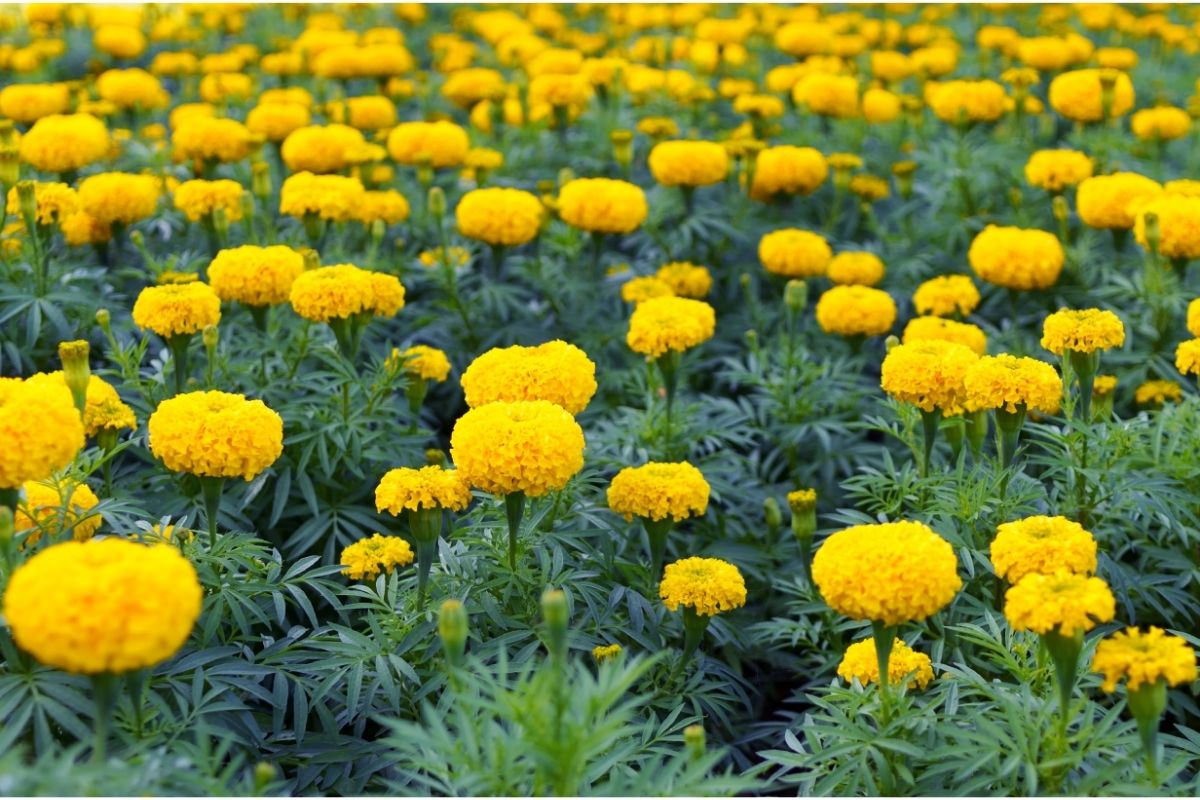
Marigolds are popular plants and native to Mexico. They are annuals and can be found throughout the world. They add wonderful variety to gardens and come in a many different colors. Many gardeners grow marigolds to control certain pests in the garden due to a chemical they produce that acts as a suppressant.
Marigold are really easy to care for. They can be grown in any type of soil and can tolerate heat, sun, and drought. Furthermore, they are easy to transplant when started off from seed indoors. They also attract a wonderful array of wildlife, including pollinators.
5. Yellow Yarrow
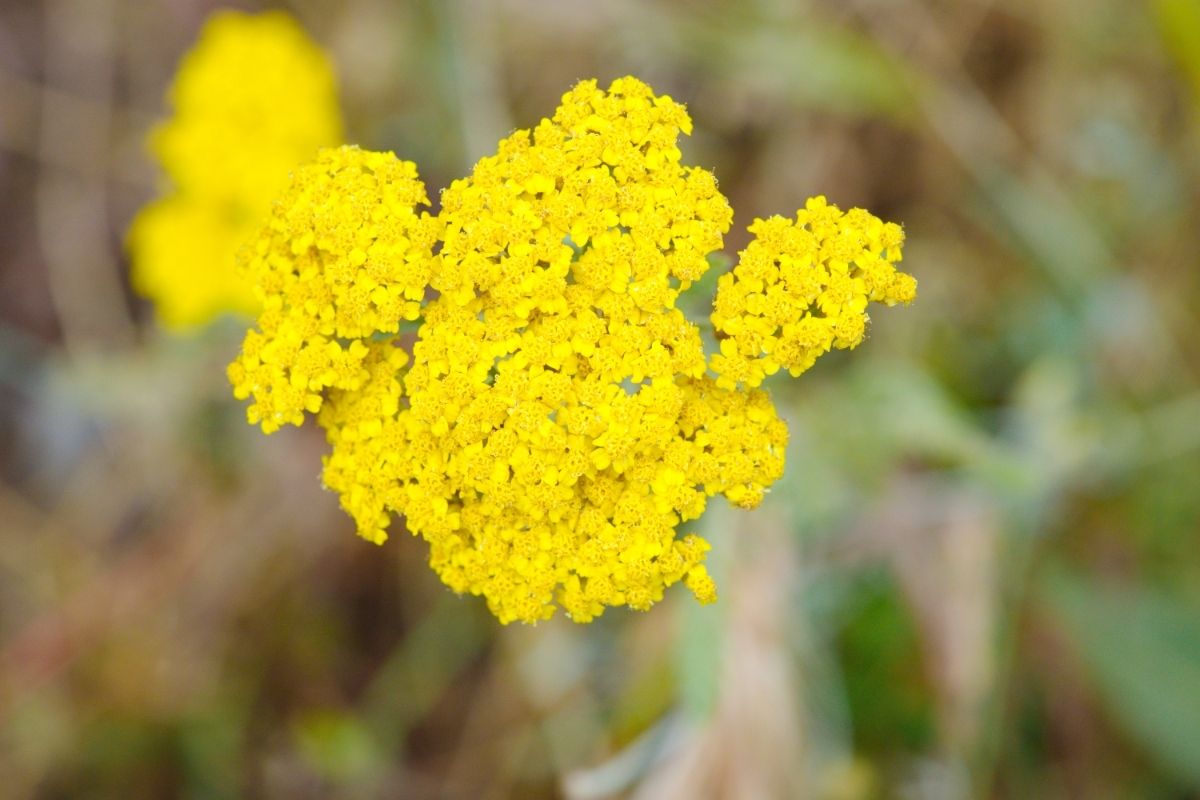
This distinctive plant is native to North America. It’s a versatile and hardy perennial and has lots of tiny little flowers tightly packed within attractive ferny foliage. It’s perfect for ground cover and borders, and you will often find it in open meadows.
Yarrow is easy to grow and is drought and pest resistant and great for cutting and drying. You should be careful to control it as it can prove to be invasive and drown out other plants. Plant in spring or summer in full sun and well-drained soil. It is also suitable for loamy and clay soil.
6. Dark Pink Flowers
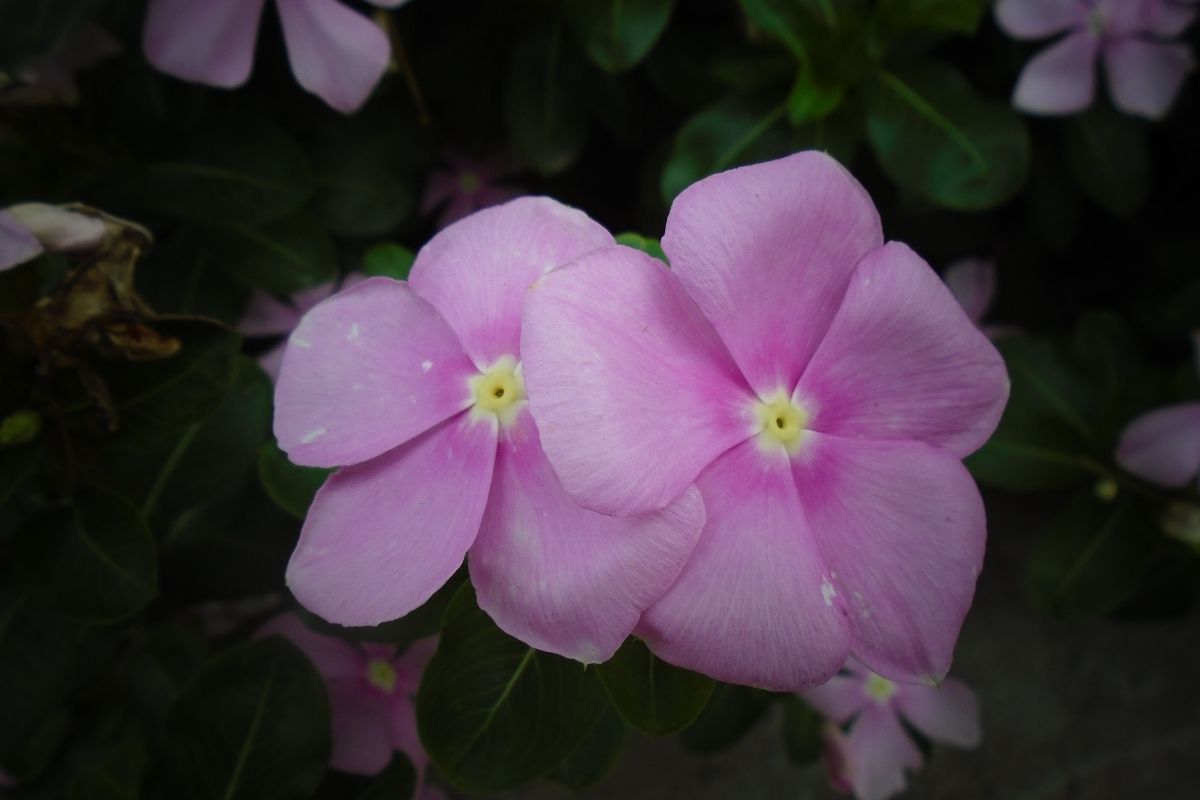
7. Coral bells
As mentioned earlier, corn comes in many colors. This pink colored flower is reminiscent of the bloody butcher corn. They are hardy perennials and add some dramatic color to the garden. They consist of upright spikes with bell-shaped flowers. Even the foliage is impressive, and they make an appearance in later spring to early summer.
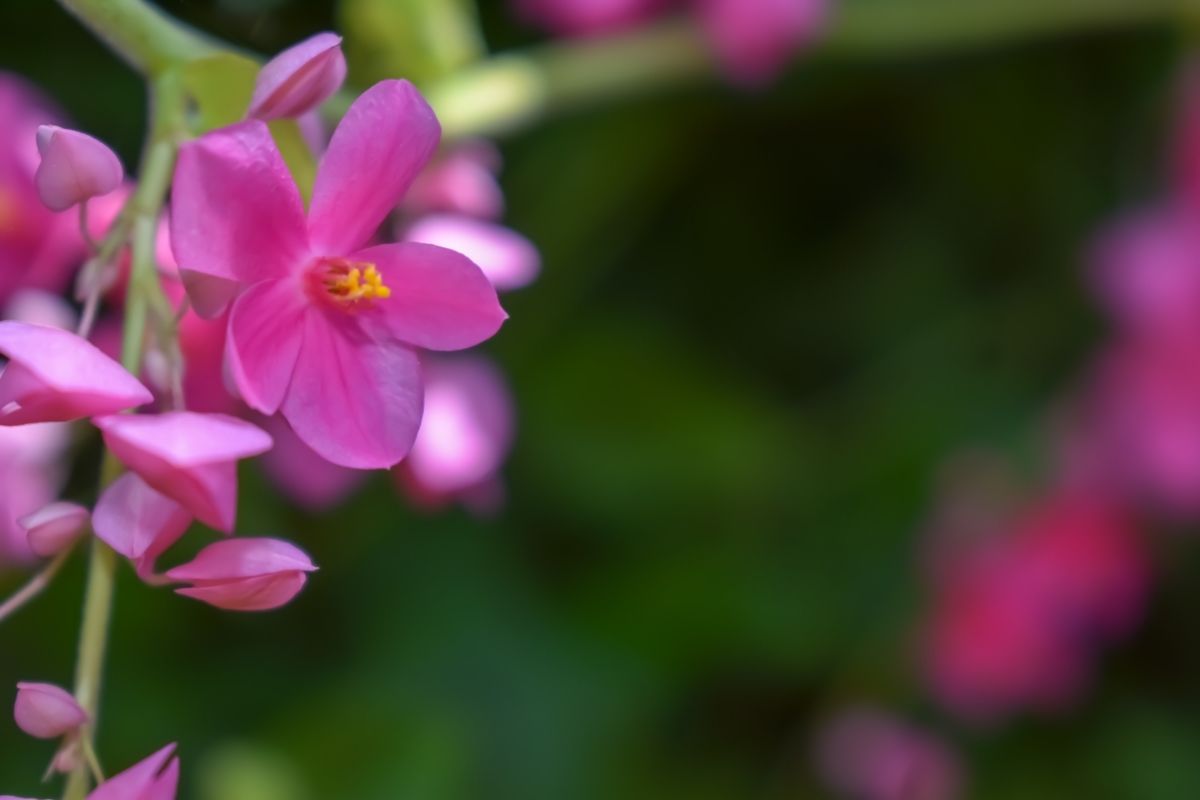
Coral Bells are super easy to grow but are found naturally in wooded areas. They thrive when these conditions are recreated, so be sure to plant them where they will receive dappled sunlight. They work really well in hedges and make great companion plants. You can also grow them successfully in containers, but you must keep them moist and add in organic-rich compost.
RELATED: 21 Different Types Of Corn Plants (Including Photos)
8. Cherry Blossom
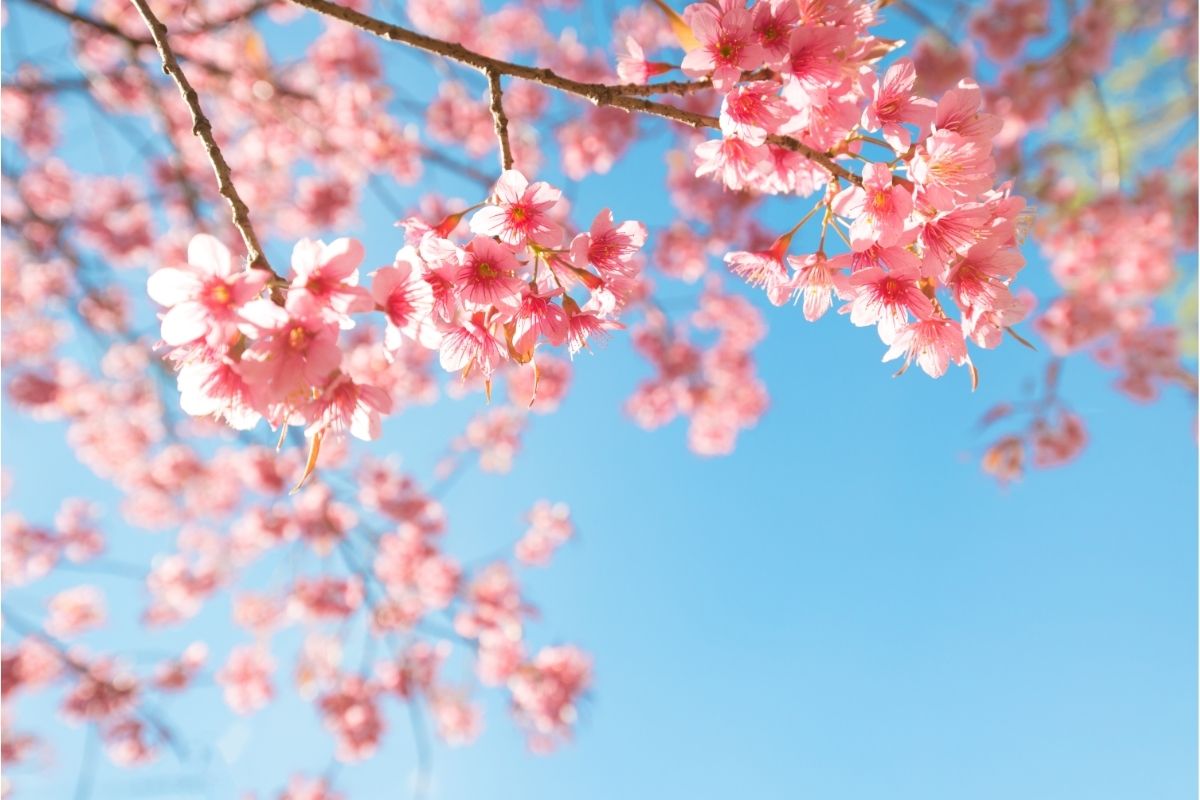
Cherry blossom is well known and loved for being a representation of springtime. There are hundreds of varieties of cherry blossom, and any one of them would make a glorious addition to your outside space.
If you decide to plant a cherry blossom ensure you place it with plenty of space and in rich fertile soil. Choose a spot that has at least 6 hours of direct sunlight each day. The soil should provide good drainage. Trees can grow between 15-30 feet high and sometimes just as wide. They typically grow 1-2 feet per year and generally need little aftercare.
9. Petunias

These cute flowers can brighten up the garden and offer long term color to any landscape. There are 4 different varieties to decide from, and they are easy to care for. They require regular watering for optimal growth and will fare better when placed in full sun.
Adding well-composted organic soil will greatly improve growth, and regular fertilizer is needed as they feed quite heavily. Taking care of them properly by removing dead heads regularly and ensuring they have adequate light will help them produce for longer.
10. Camellia
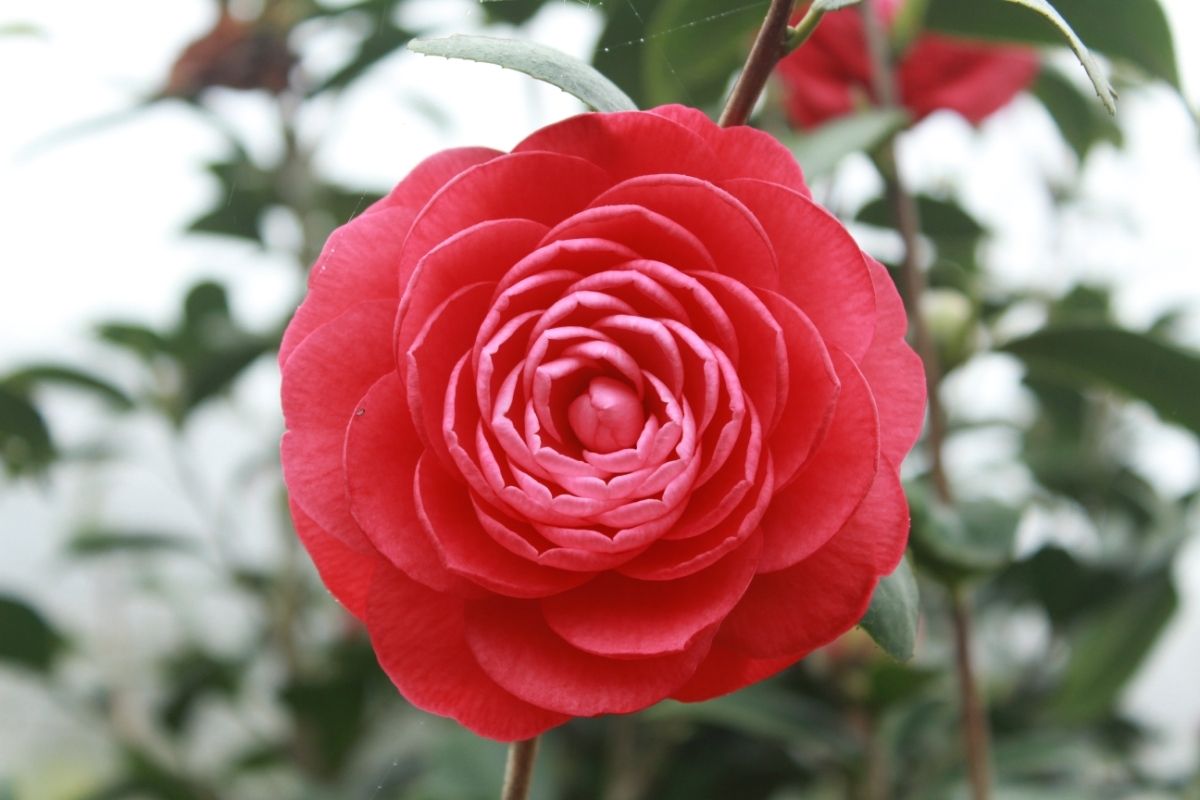
The camellia plant is an upright evergreen shrub. It can reach up to 10 m and produces flowers in the spring that are pink and white. They add some glorious color to winter and bloom from October all the way through to May. They are classed as one of the best flowering shrubs around, which is why they are so popular to grow.
Camellias are hardy and thrive when placed in temperate climates. They grow best when placed in acidic and moist soil that is well-draining and rich in organic matter. They enjoy some sun but do best in partial shade. Protect them from the afternoon sun to avoid their leaves getting scorched.
11. Foxglove
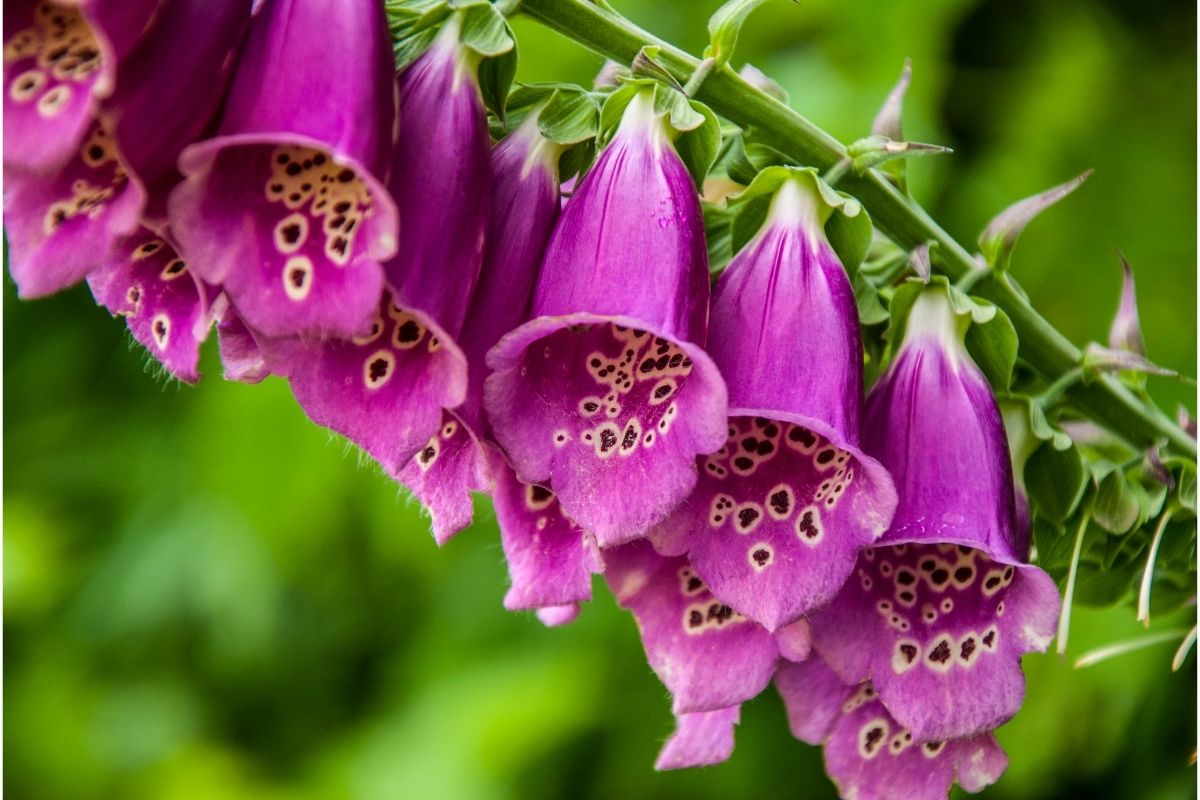
Foxgloves are well-loved by gardeners and often used to add height to the garden floral arrangement. Their stems can reach 6 feet (1.83 m) tall depending on the particular variety. Foxgloves produce tubular clusters of blooms, and the dark pink variety is particularly appealing.
Grow foxgloves in full sun, partial shade or full shade. If summers are hot, where you live protect them from the intense heat of the afternoon. Plant in moist, well-draining soil and remember to remove heads, or they will reseed and reproduce in abundance.
12. Red/black flowers
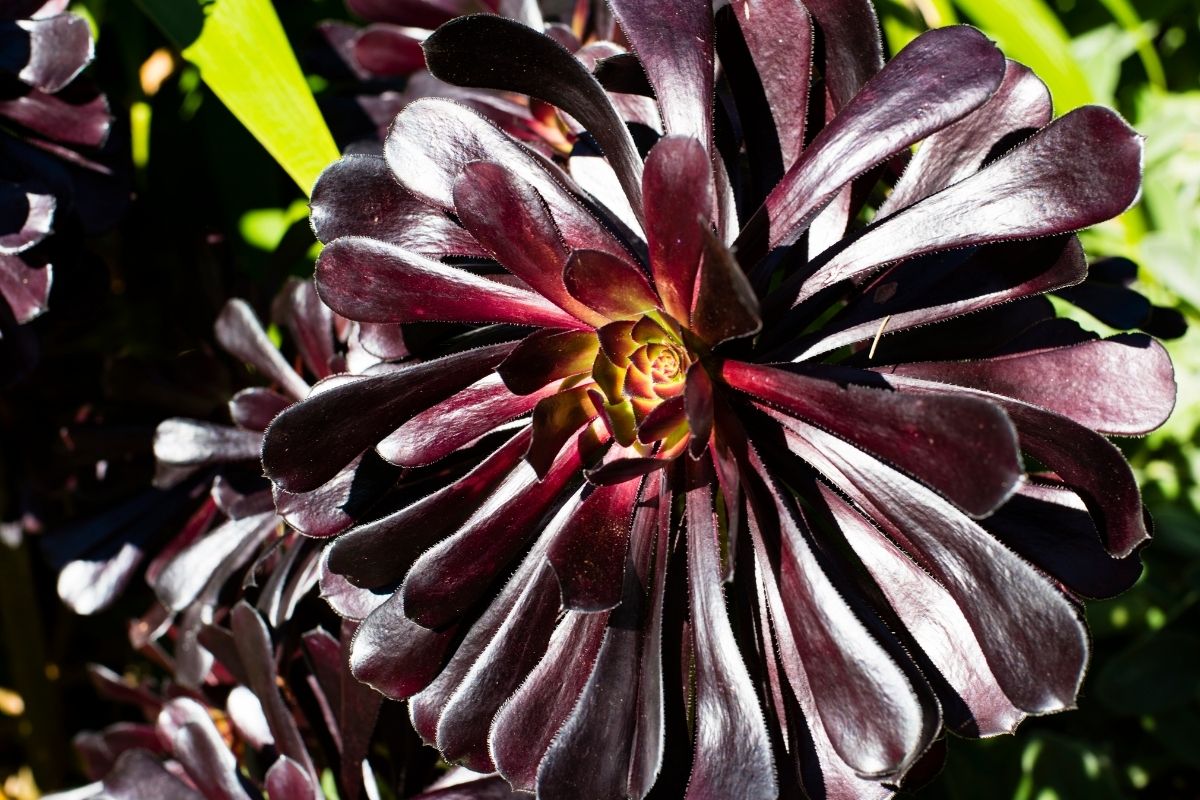
13. Black Bearded Iris
This unusual iris adds some decadence to the garden and works well against other lighter colors for dramatic contrast. It’s fully hardy, so can thrive well even at low temperatures. The plant sits tall and has green and narrow leaves, and you can expect to see flowers from late spring to early summer.
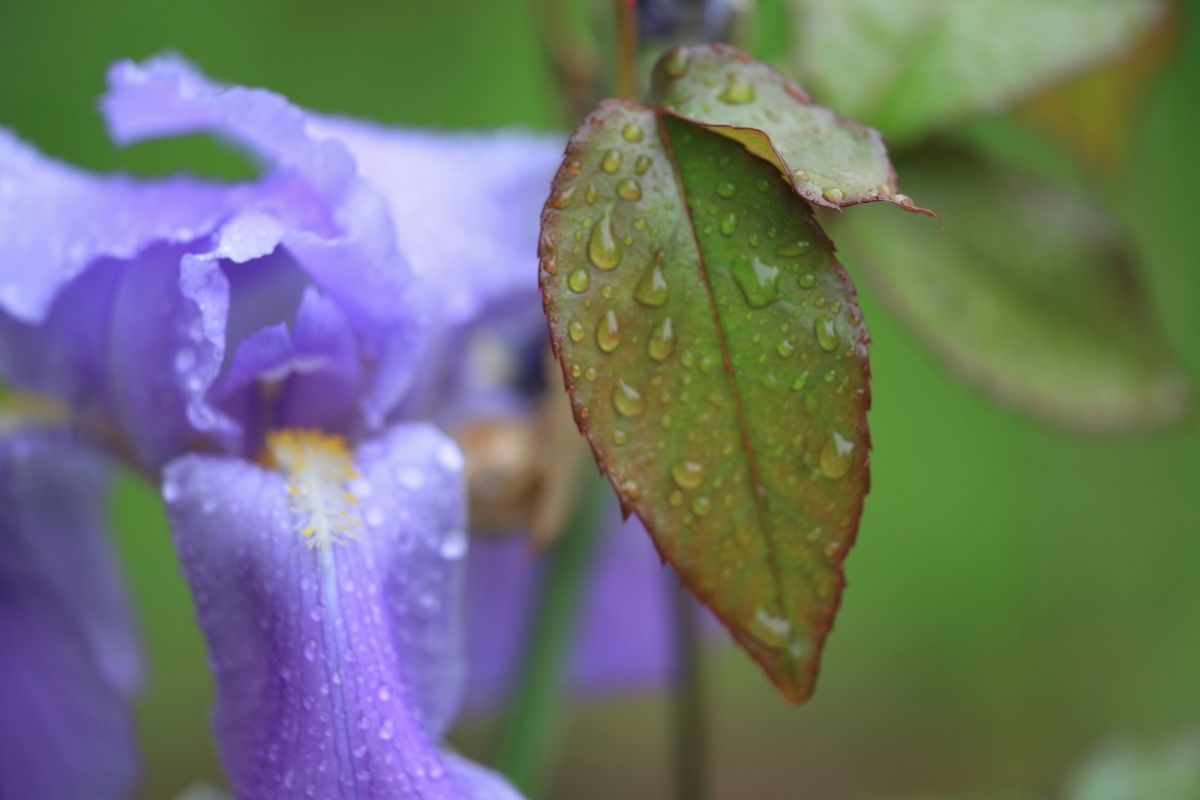
Plant the iris in full sun and well-drained soil, and add compost or well-rotted manure each year. It also grows best in light sandy soil.
14. Green Wizard Coneflower

The green wizard coneflower is an unusual perennial plant that grows up to 2 m. It has stems that branch out and has a flower head with a ring of green surrounding it. Although there are no petals on this flower, they work well in floral arrangements and can be dried easily.
Place the plant in full sun or partial shade, and they will flower late summer to early autumn. In addition to adding drama to the garden, the coneflower also attracts birds, bees, and butterflies.
15. Arabian Death Dhalia
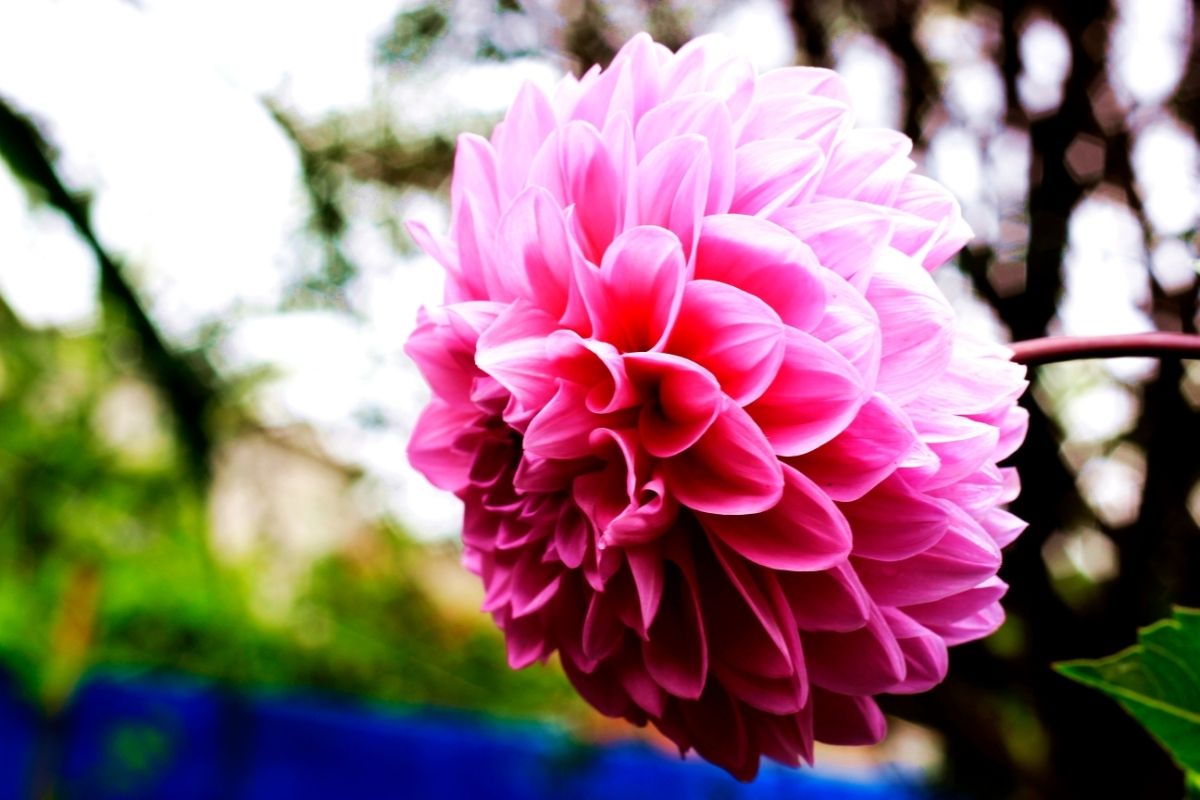
Arabian death dahlia is as seductive as it sounds. It is a tuberous perennial native to Mexico and Central America. Plant them in your garden as a contrast to more subtle colors and to add a wow factor to flower beds and borders. Just like the colored corn, these unique plants will attract attention from observers.
Not only do these dahlias look stunning, they also make good food for insects such as moths. Bear in mind that these plants detest direct sunlight, so be sure to plant them with other plants that need the same conditions to thrive. In addition, the soil needs to be well-drained soil kept moist for best performance. You may need to provide supports to help the plants stay upright.
RELATED: Corn Plant: The Most Complete Care, Propagation, and Water Guide
16. Scarlet Star
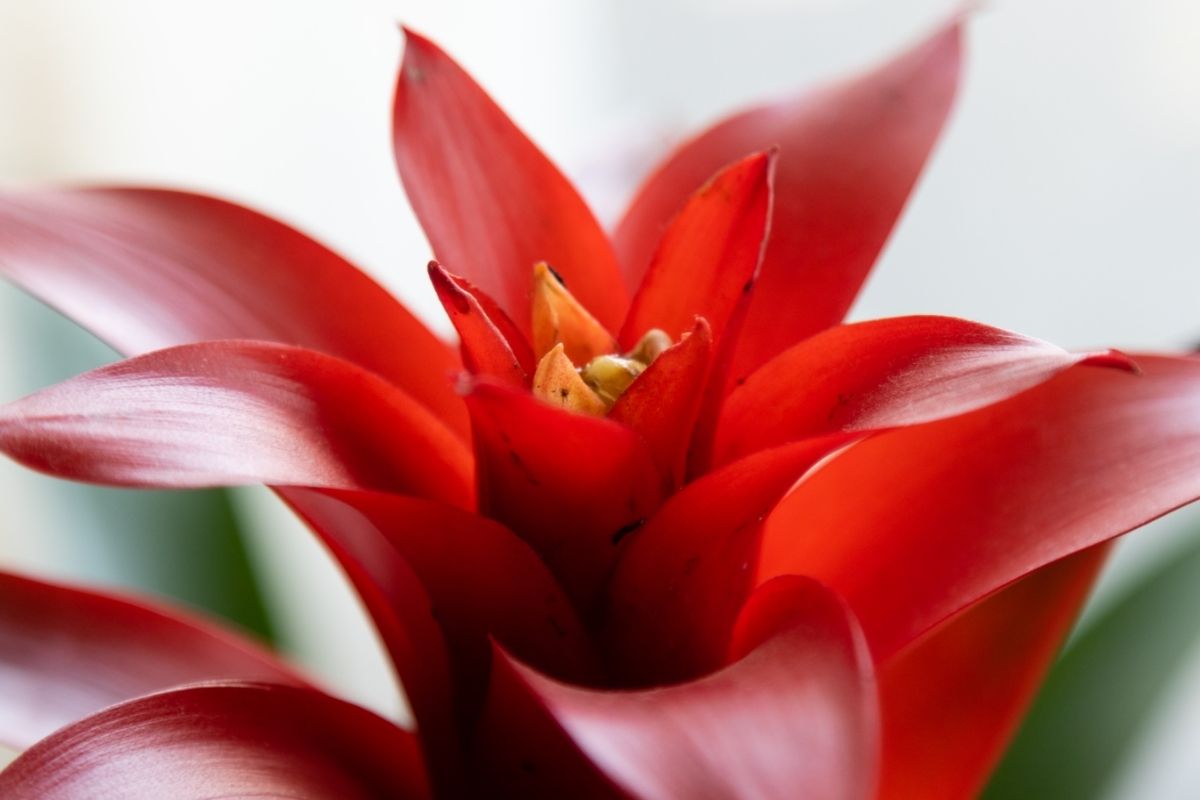
The scarlet star is a popular houseplant from the Bromeliad family. It consists of luxurious glossy green leaves and contains a flower head of red bracts that grow through the center of the plant. They are a tropical plant and make a great addition to a tropical-themed space.
Place the houseplant in a bright location away from direct sunlight. Too much sun will create unsightly brown spots. It’s useful to note that Bromes are sensitive to water chemicals such as fluoride and chlorine, so you should collect rainwater and use this for the plant. Be sure to warm the water up to room temperature first, as they don’t respond well to cold water.
These are just a snapshot of all the varieties of different colored flowers similar to corn. Maybe start a scrapbook so gather all the information together and impress your friends with your newfound flower knowledge.
Editor’s Recommendations
Tan Deliciouso! 39 Different Types Of Mexican Vegetables







